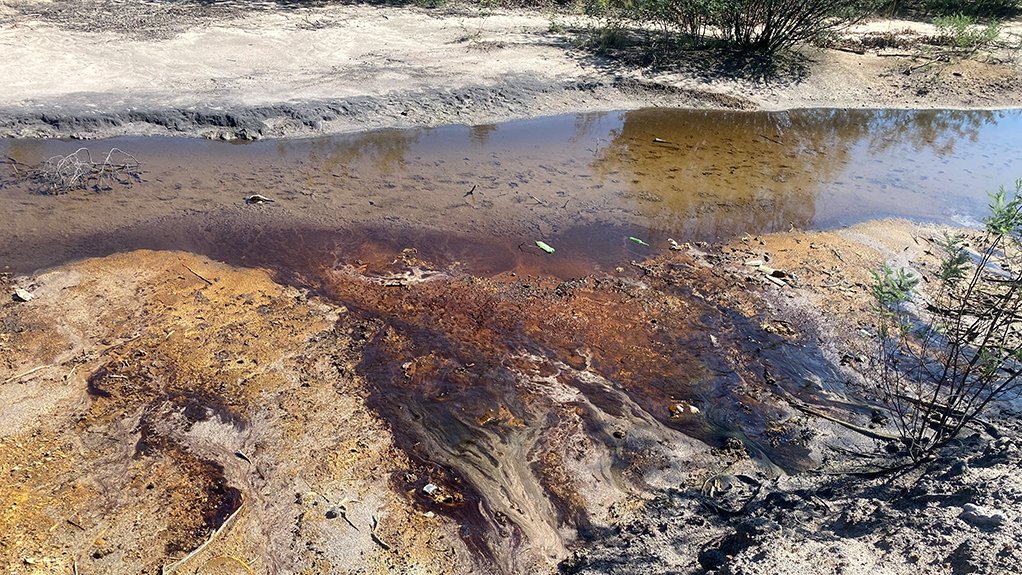Sensible water management more evident at mines


SOLVING SEEPAGE There has been a noticeable uptick in South African and African mines treating and reusing water, owing to global green initiatives
Professional services provider WSP Earth and Environment in Africa, previously Golder Associates, water treatment lead Peter Wille says there has been a noticeable uptick in South African and African mines treating and reusing water, owing to global green initiatives and local pressure from government.
“This can be attributed to larger South African mining houses committing to the global green-mining transition, as well as to the principles developed by the International Council on Mining and Metals,” he explains.
Environmental, social and corporate governance (ESG) components have become integral to doing business and mining companies cannot escape this reality.
“We also find that several mining clients in other African regions, even those where environmental legislation is not as demanding as South Africa’s, are voluntarily applying their in-house accepted standards to their sites.”
Wille stresses that, with water being a scarce commodity in South Africa, all industries must look at how to conserve and optimally use this resource.
This can be achieved through a stakeholder-inclusive process that involves site and catchment-based actions.
“A number of our clients have used the WSP Earth and Environment team to assist with fit-for-purpose studies, where we use our experience in applying water-pinch principles – widely used in the industrial and oil and gas sectors – to mining,” he says.
The identified water sources on site are then aligned with the water sinks or users, based on water quality and quantity.
Consequently, by matching the quality needs and specifications of various equipment and processes to the water qualities available on site, mines can optimise the level of water treatment applied for specific reuse purposes.
“In this way, water reuse can be maximised while minimising water treatment costs.
“This is especially relevant for the mining sector, where water stewardship has become a hot-button topic that has proven challenging to put into practice,” stresses Wille, who explains that the United Nations Industrial Development Organisation defines water stewardship as, “the use of water in a socially equitable manner, that is environmentally sustainable and economically beneficial”.
Meanwhile, the new National Environmental Management Laws Amendment Bill IV (NEMLAA4), signed in June, will further compel the mining industry to increase focus on good ESG behaviour and performance, Wille points out.
He stresses that ESG practices should be observed not only during operation but also with post-closure responsibility in mind.
A significant shift in the legislation is the power now given to the Water and Sanitation Minister to access either a part of or the entire financial provisioning set aside by the mine for rehabilitation, if the Minister deems that the mine is failing in its responsibility to mitigate its environmental impacts.
In the Pipeline
Wille says mines, historically, tended to mix all water streams and then apply end-of-pipe treatment where water is either reused or released into the environment.
“Often, segregation at source can result in a significant reduction in treatment costs and increased reuse potential,” he notes, adding that the identification of best point of treatment using water-pinch principles can assist in reducing water treatment liability.
“WSP Earth and Environment is involved in assisting various clients in Africa with coal, bauxite and other mining applications to assess available technology options to address aspects such as salt removal from acid mine drainage, as well as oil and water separation.
“We are also involved in numerous studies for diversified mining houses on fit-for-purpose, water-quality assessments as a means of increasing water reuse,” he adds.
In terms of long-term water management, WSP Earth and Environment in Africa is supporting a coal mining client with the development of a water management strategy for its existing and decommissioned facilities.
This entails a blend of active and passive treatment solutions including reverse osmosis, phytoremediation and sulphate and heavy metal removal solutions.
The intention is to achieve a holistic solution, which not only addresses the remediation of water after mine closure but also timeously adapts the management at active sites to minimise water impact.
“Focus is also being placed on post-closure social upliftment by developing the remediation solutions in a way that can support local small business and entrepreneurial development,” Wille concludes.
Comments
Press Office
Announcements
What's On
Subscribe to improve your user experience...
Option 1 (equivalent of R125 a month):
Receive a weekly copy of Creamer Media's Engineering News & Mining Weekly magazine
(print copy for those in South Africa and e-magazine for those outside of South Africa)
Receive daily email newsletters
Access to full search results
Access archive of magazine back copies
Access to Projects in Progress
Access to ONE Research Report of your choice in PDF format
Option 2 (equivalent of R375 a month):
All benefits from Option 1
PLUS
Access to Creamer Media's Research Channel Africa for ALL Research Reports, in PDF format, on various industrial and mining sectors
including Electricity; Water; Energy Transition; Hydrogen; Roads, Rail and Ports; Coal; Gold; Platinum; Battery Metals; etc.
Already a subscriber?
Forgotten your password?
Receive weekly copy of Creamer Media's Engineering News & Mining Weekly magazine (print copy for those in South Africa and e-magazine for those outside of South Africa)
➕
Recieve daily email newsletters
➕
Access to full search results
➕
Access archive of magazine back copies
➕
Access to Projects in Progress
➕
Access to ONE Research Report of your choice in PDF format
RESEARCH CHANNEL AFRICA
R4500 (equivalent of R375 a month)
SUBSCRIBEAll benefits from Option 1
➕
Access to Creamer Media's Research Channel Africa for ALL Research Reports on various industrial and mining sectors, in PDF format, including on:
Electricity
➕
Water
➕
Energy Transition
➕
Hydrogen
➕
Roads, Rail and Ports
➕
Coal
➕
Gold
➕
Platinum
➕
Battery Metals
➕
etc.
Receive all benefits from Option 1 or Option 2 delivered to numerous people at your company
➕
Multiple User names and Passwords for simultaneous log-ins
➕
Intranet integration access to all in your organisation


















